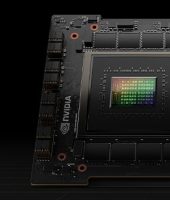A group of 40 people from Perth took the opportunity to explore our solar system’s greatest planet, Jupiter and its cloudy skies, during an event organised by Astronomy Data and Computing Services (ADACS) and hosted by Scitech, Flux Core Innovation Hub and the Perth Observatory.
ADACS is a collaboration between the Pawsey Supercomputing Centre, Curtin University, and the Swinburne University of Technology, and the program has been funded by Astronomy Australia Ltd. ADACS has given astronomers across the nation support services and tools to maximise the benefits of data and computer infrastructure.
The aim of this special event was to give a taste of the reality of space exploration and the roles of astronomers, and perhaps inspire the astronomers of the future. During the session, attendees had the opportunity to find out about NASA’s Juno probe, learn some scientific image processing skills and apply them to images from Juno’s JunoCam, and finally observe Jupiter live from the observatory’s telescopes.
Jupiter is the largest planet in the solar system, more than 1,300 earth will fit inside it. The planet is mostly made up of hydrogen and helium gas and it is covered by thick colourful clouds, which gives the impression of stripes.
Ilias Delis, a chemistry student from Curtin University, enjoyed the opportunity to move “from a molecular level to the astronomical”, she also said that “it was thoroughly interesting throughout the day.”
Organisers were bombarded with positive feedback from the participants, who found the experience “educational and informative.” Sishir Sharma found the afternoon “was enjoyable and there was much knowledge that was taken home”.
The participants produced 68 images as a result of their processing experience with JunoCam. The images are currently displayed on the interactive Science Wall at SciTech and have been well received by both young and old visitors to the exhibition.
To see some of the images that were created during the event visit Pawsey’s facebook page here
Some people also took the opportunity to upload their images to the official NASA Juno website.



